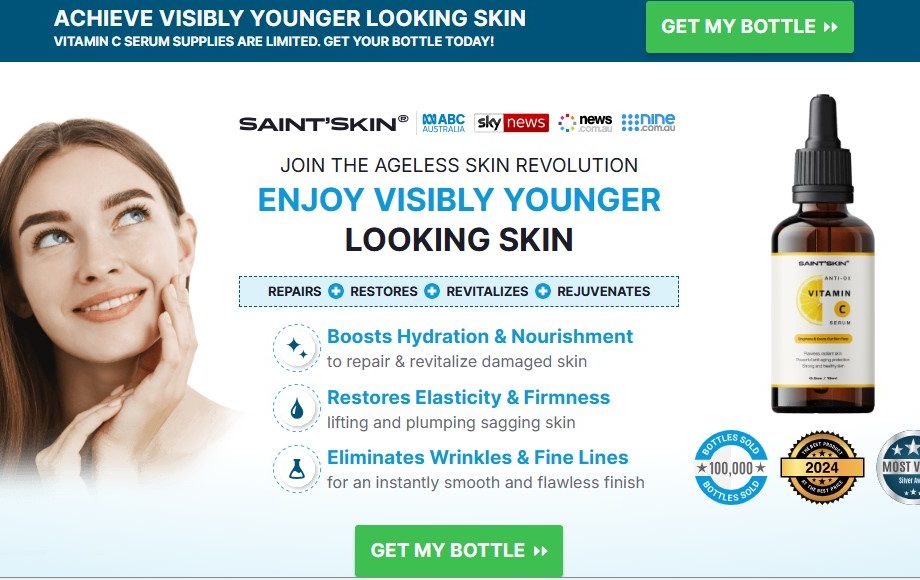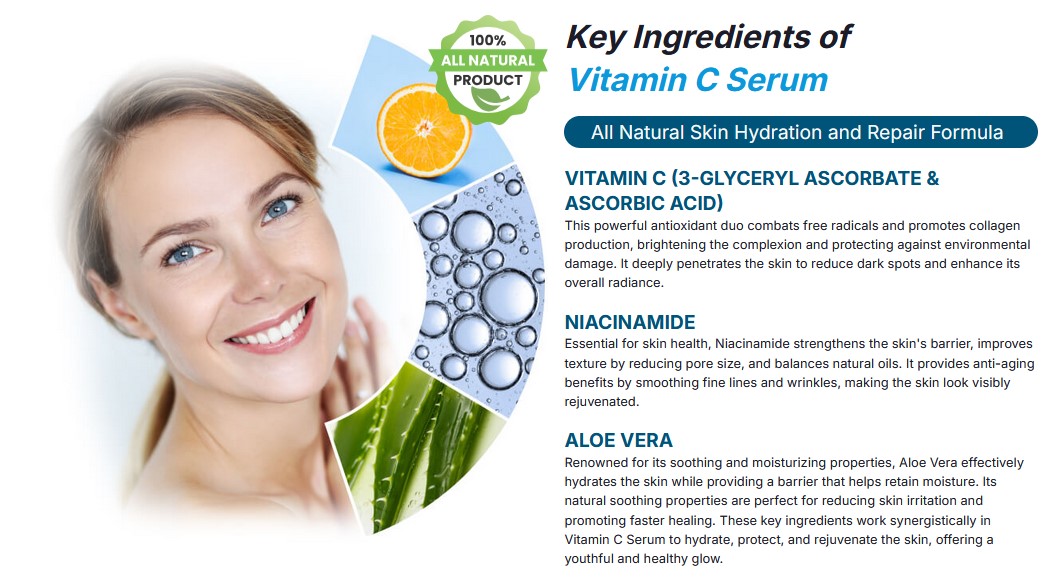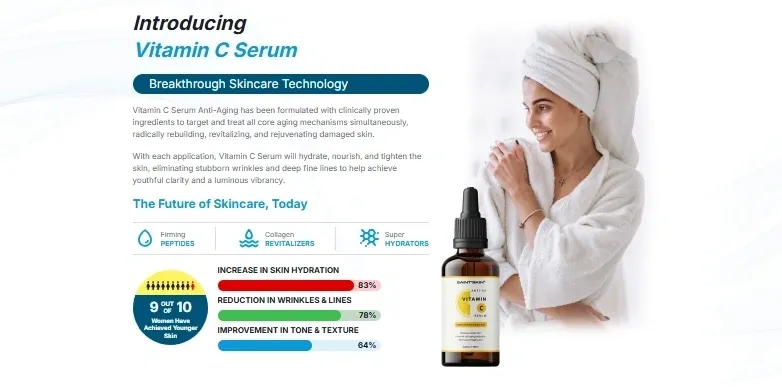Vitamin C serums have become a cornerstone of modern skincare routines — loved for their brightening effects, antioxidant protection, and ability to support firmer, healthier-looking skin. Among the many brands on the market, SAINT SKIN Vitamin C Serum has gained attention for its formulation that aims to combine effective concentrations of vitamin C with stabilizing ingredients and skin-soothing actives. This article is a comprehensive Canadian-focused guide to SAINT SKIN Vitamin C Serum: what it is, who it’s best for, how to use it safely and effectively, how it compares to alternatives, and answers to the most common questions.
Whether you’re shopping in Toronto, Vancouver, Montreal, or anywhere in Canada, this guide will help you decide if SAINT SKIN is the right vitamin C serum for your skin and routine.
What is SAINT SKIN Vitamin C Serum Canada?
SAINT SKIN Vitamin C Serum is a topical skincare product formulated to deliver vitamin C (ascorbic acid or a stabilized derivative) to the skin. Vitamin C is a water-soluble antioxidant that plays multiple roles in skincare: it neutralizes free radicals, supports collagen production, reduces visible hyperpigmentation, and improves overall skin tone and radiance.
Most vitamin C serums differ in the form of vitamin C used, concentration, pH, complementary ingredients (like vitamin E, ferulic acid, niacinamide, or hyaluronic acid), and the type of delivery tech (stable derivatives or encapsulation). SAINT SKIN positions itself as a modern serum blending potent vitamin C activity with supporting ingredients that reduce irritation and enhance stability.
Key Ingredients and What They Do
Understanding the ingredient list helps you decide if a serum will work for your skin. Below are the typical ingredient categories you’ll find in a high-quality vitamin C serum like SAINT’SKIN, and what each brings to the table.
Vitamin C (L-ascorbic acid or derivative) — the main active. L-ascorbic acid is the gold standard for Vitamin C activity but is sensitive to air, light, and pH. Derivatives (e.g., sodium ascorbyl phosphate, magnesium ascorbyl phosphate, ascorbyl glucoside) are more stable and gentler but may be less immediately potent. SAINT SKIN’s formulation typically balances potency with stability.
Vitamin E (tocopherol or tocopheryl acetate) — an antioxidant that works synergistically with vitamin C. It helps stabilize vitamin C and provides additional free-radical protection.
Ferulic Acid — when paired with vitamins C and E, ferulic acid can significantly boost antioxidant benefits and improve photoprotection.
Hyaluronic Acid — a hydrating humectant that pulls moisture into the skin, preventing the dry, tight feeling that can sometimes accompany active serums.
Botanical Extracts & Soothers (e.g., aloe vera, green tea, chamomile) — added to calm skin and reduce irritation, particularly useful in higher concentration vitamin C formulas.
Stabilizers & Delivery Agents (e.g., glycerin, propanediol, encapsulation systems) — keep the serum stable, improve skin penetration, and create a pleasant texture.
Note: Exact ingredient lists can vary between product batches, so always check the label on the box before purchase if you have allergies or sensitivities.
Benefits You Can Expect
When used consistently and correctly, vitamin C serums can offer a lineup of visible and protective benefits. Here’s how SAINT SKIN typically aims to deliver results:
- Brighter, more even skin tone — vitamin C interferes with melanin production pathways, helping fade post-inflammatory and sun-related dark spots over weeks to months.
- Antioxidant protection — it neutralizes free radicals from pollution, UV exposure, and daily oxidative stress, helping prevent premature aging.
- Support for collagen and skin firmness — vitamin C is a cofactor in collagen synthesis and can reduce the look of fine lines over time when combined with a full protective routine.
- Improved skin texture and radiance — many users notice smoother, glowing skin as hyperpigmentation and surface dullness reduce.
- Complement to sunscreen — while vitamin C is not a sunscreen, when paired with SPF it increases overall protection against environmental damage.
Realistic expectations matter: most visible changes in pigmentation and texture take 6–12 weeks of consistent use. Collagen-related improvements may take longer and are amplified when combined with sun protection and a healthy lifestyle.
Who Should Use SAINT SKIN Vitamin C Serum Canada?
Vitamin C is broadly beneficial, but it’s not one-size-fits-all. Consider the following:
Best suited for
- People with dullness, uneven tone, or early signs of photoaging.
- Those who want antioxidant protection alongside brightening.
- Most skin types, when a suitable formulation or concentration is chosen.
Use caution if
- You have very sensitive or rosacea-prone skin — start with a lower concentration or a derivative formulation and perform a patch test.
- You’re using other strong actives like high-strength retinoids or exfoliating acids — introduce vitamin C gradually and monitor for irritation.
Not recommended for
- Skin with active, severe inflammatory conditions unless cleared by a dermatologist. For routine maintenance and cosmetic concerns, vitamin C is usually safe but should be integrated thoughtfully.
How to Use SAINT SKIN Vitamin C Serum Canada — A Step-by-Step Routine
To get the most from any vitamin C serum:
- Cleanse: Start with a gentle cleanser to remove oil, dirt, and makeup.
- Tone (optional): If you use a hydrating or balancing toner, apply it next. Avoid toners with high alcohol content that can dry the skin.
- Apply SAINT’SKIN Vitamin C Serum: Dispense 2–3 drops onto fingertips and gently press into face and neck. Let it absorb for 1–2 minutes.
- Follow with hydrator/serum layer: If you use hyaluronic acid or niacinamide, apply those next. (Note: niacinamide and vitamin C can be used together — earlier concerns about incompatibility are largely overstated with modern formulations.)
- Moisturize: Lock in hydration with a suitable moisturizer.
- Sunscreen (morning only): Always apply broad-spectrum SPF 30 or higher in the morning. Vitamin C works best as part of a sun-protection strategy.
Frequency: Start with once daily (preferably morning) or every other day if you have sensitive skin. If well-tolerated, increase to daily use. Many users prefer a morning application because of the antioxidant protection during the day; others use vitamin C both morning and evening depending on their routine.
Storage: Keep the bottle away from direct sunlight and heat. Tightly close the cap after each use. If the serum contains L-ascorbic acid, discoloration (yellowing or brown) can indicate oxidation — consider replacing if that occurs.
Concentration and Formulation — What to Look For
Vitamin C serums vary in concentration from as low as 5% to 20%+ for L-ascorbic acid formulations. Here’s how to choose:
- Beginners or sensitive skin: 5–10% or a gentler derivative.
- Most users seeking visible brightening: 10–15%.
- Experienced users seeking maximum potency: 15–20%, but with higher risk of irritation.
Because SAINT’SKIN blends stabilizers and soothing agents, many users find its mid-range concentrations offer good results with acceptable tolerance. If you’re not sure, start low and build up.
Pairing SAINT SKIN Vitamin C Serum Canada with Other Active Ingredients
Vitamin C is versatile but interacts with other actives in ways worth noting:
- Retinoids: Both vitamin C and retinoids benefit skin but can be drying together. Consider using vitamin C in the morning and retinoids at night, or alternate nights to minimize irritation.
- AHAs/BHAs: Chemical exfoliants increase penetration and may boost vitamin C efficacy, but combining strong acids and high-concentration vitamin C can irritate. Use with care.
- Niacinamide: Modern evidence indicates niacinamide and vitamin C are compatible and can complement each other — niacinamide can help regulate oil and reduce inflammation while vitamin C brightens.
- Sunscreen: This is the must-have partner. Vitamin C enhances photoprotection when used alongside a mineral or chemical sunscreen.
Safety, Side Effects, and Patch Testing
Vitamin C serums are generally safe, but some people experience mild irritation (stinging, redness, or dryness), especially with high-strength L-ascorbic acid. To minimize risks:
- Patch test: Apply a small amount on the inside of your forearm or behind the ear for 24–48 hours to check for reaction.
- Start slow: Begin with every-other-day application and build up.
- Use a gentle cleanser and moisturizer: Support your skin barrier to reduce sensitivity.
- Stop if severe irritation occurs: If you develop intense burning or swelling, discontinue and consult a dermatologist.
Allergic reactions are rare but possible — read ingredient labels for known allergens.
Realistic Timeline for Results
No topical product produces instant miracles. Typical timelines:
- 7–14 days: Increased skin radiance in some users.
- 4–8 weeks: Noticeable reduction in mild hyperpigmentation and a smoother texture.
- 3–6 months: Continued improvement in pigmentation and fine lines when combined with sun protection and a consistent skincare routine.
Patience and consistency are the keys.
How SAINT SKIN Compares to Other Vitamin C Serums
When evaluating SAINT SKIN against competitors, consider these comparison points:
- Form of vitamin C used: L-ascorbic acid offers robust activity but is less stable; derivatives are gentler and more stable.
- Concentration: Higher concentration often means greater efficacy but more chance of irritation.
- Supporting antioxidants: Presence of vitamin E and ferulic acid can boost overall effectiveness.
- Texture and absorption: Lightweight serums layer well with other products; heavier textures may be better for dry skin.
- Stability and packaging: Opaque, airless pumps or dark glass bottles help preserve vitamin C potency over time.
SAINT SKIN aims to strike a balance between potency and tolerability — offering a well-rounded serum that fits into Canadian skincare routines across climates.
Conclusion SAINT SKIN Vitamin C Serum Canada
SAINT SKIN Vitamin C Serum presents a balanced, approachable Vitamin C option that emphasizes stability, hydration, and gentle brightening — which makes sense for a wide Canadian audience seeking daily glow-boosting products without aggressive irritation. The science behind its ingredients is sound, but remember: ingredient lists and real results matter more than marketing. Consistency, sunscreen, and sensible expectations will deliver the best outcome.





